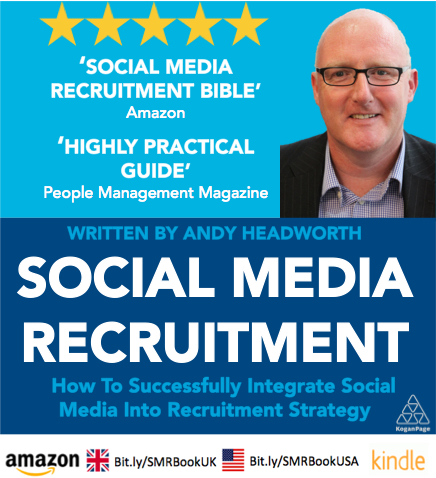10 Reasons Why Instant Messaging Is Essential For Recruitment
How do you chat and message your friends? I am sure it is on a mobile device and I bet you use it for texting and instant messaging every day. It does seem nowadays that people would rather use text based messaging to communicate with each other (even in the same room!), than dial a number and talk. And this is only increasing e.g. SMS is used on nearly EVERY single phone, Facebook Messenger has increased from 300 to 700million active users in the last year alone, and WhatsApp now has 1billion active users. Even LinkedIn have moved their communications to a new unified messaging system.
So the (candidate) world is using instant messaging (in various apps and platforms), yet HR and tech vendors still don’t integrate it into their platforms. 🙁
The problem is that the recruitment industry is still driven by emails. Recruiters send them, companies send them, technology providers send and auto-respond with them inside the recruitment process. Career sites and job boards make candidates register accounts with emails to apply for jobs and job alerts. All these emails actually trigger more emails asking them to confirm receipt of emails with another email. Then there is the whole plethora of email newsletters we all receive ….. via emails! These would be ok if these emails were all tracked and linked so that the thread of information could be maintained - so important during the recruitment process - but many of the current recruitment technologies just don’t do this. Some email programmes offer threaded emails - Gmail being the best example - but start a new email to a person and then the thread is broken.
When you have sent them, how do you know if these emails have been read (or at least viewed) by the recipient? I use the awesome YesWare that tracks this most of the time and tells me when recipients are actually opening and reading the emails, but this can be blocked. Read receipts are also not a reliable methods.
Wouldn’t it be great for recruiters to use the products/apps that your candidates use every day? Let me explain why they are the future of your candidate engagement, and how you can start using them now to increase your candidate response rates. Here are 10 reasons why instant messaging is the future of candidate engagement:
- They are ubiquitous. Every single person with a mobile device has a messaging app/platform on it. This means every one of your candidates - you just need to ask them which ones they use.
- Scale. Many of the common messaging platforms/apps already have a huge user base (Messenger, iMessage, WhatsApp, WeChat, BBM, Snapchat, Hangouts, Twitter (I refer to the DM functionality here) and LinkedIn Messages). You don’t need to build an audience they are already there.
- Speed. As they are all on a mobile device, they all have push notification functionality. Unless the user has disabled them for all the individual apps then they will see the message you send them immediately on their home screen (and even their locked screen), the moment you hit send.
- Response times. The ease with which people can reply is as simple as a swipe left or right, and the time it takes to write the response. We are all more likely to respond quickly to a message rather than open an email and compose a reply.
- Visibility. A lot of people (especially the younger age groups) don’t have push email turned on, on their phones, instead they have on-demand email, meaning they only download it when they want to. Many only use email because they are made to by Apple and Google for iTunes, iCloud etc. This could lead to your important emails remaining unread for longer (or never at all in some cases!).
- Multi-function messages. Many of the message platforms have multiple functions embedded, like voice calls, video calls, images, files attachments etc. So you can engage candidates in whatever way you want to - on one platform/app. Messenger (in the USA) has even added an artificial intelligence engine (A.I.) to provide you with your own personal assistant! In WeChat in China, you can play games, access city services, hail cabs, book tickets and apply for jobs (with your profile). The recruitment opportunities for these are endless.
- Threaded conversations. This is huge for recruiters and candidates to track end to end conversations about opportunities. The single message strings stay there, and can be accessed and added to by either party at any time. And unless they are deleted on the device, they are there at any stage in the future, to continue discussions with the information right there. For a candidate this is superb, as it keeps all the communications in one place - not four or five emails, some of which requiring passwords to access the information.
- SMS is widespread. SMS use by recruiters is now bigger than ever, as a great way of communicating information and reminders to candidates. Most ATS systems have SMS integrated into their platforms, although it is typically still a broadcast communication method. So the next step to IM (instant messaging) should be intuitive for the recruiters to use.
- Ease of use. We all use IM every day in our regular communications with friends and family - we know how to use the different platforms available. So bringing these platforms into the workplace requires little or no training - giving an immediate uptake of use.
- Global. The IM platforms are truly global - there are no boundaries or barriers to use. Messenger, WhatsApp, Hangouts and WeChat are used ALL OVER THE WORLD. You don’t need to worry about different systems for different countries, both candidates and recruiters already all use the SAME platforms everywhere.
One of the most common conversations I have with clients when consulting, is getting them to understand what their target audience actually is and where that audience is. We know how many people use these IM platforms every single day, yet it is currently a huge blindspot for HR and recruitment technology vendors.
Of course it doesn’t stop the more forward thinking recruiters using IM for contacting and communicating with candidates, but from a governance perspective ( and compliance in some industries), it may be necessary for some companies to record these conversations in their ATS.
Recruitment is notoriously slow at adopting and integrating new technologies - how long did it take technology providers to integrate social media? And don’t get me started on the completely crazy approach of companies not having a mobile responsive career site!
So how long before your ATS provider integrates IM into your platform- 2016, 2017, 2018?
If you want to discuss / need help for any of the above further, just let me know. And remember if you like this post, don’t forget to subscribe to Sirona Says blog to ensure you don’t miss the weekly posts.














Pingback: XMPP Radar Newsletter #4 | ProcessOne — Blog()